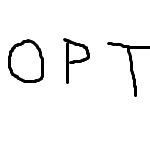- This topic has 11 replies, 7 voices, and was last updated 7 years, 3 months ago by
 muhammad jawad.
muhammad jawad.
-
AuthorPosts
-
-
March 22, 2016 at 1:15 am #33523
 Dhananjay PatelParticipant
Dhananjay PatelParticipantDear All,
what is the use of circulators and optical delay elements in bidirectional optical fiber designs given in sample programs. The program works fine even without the use of them.
How to decide the amount of delay required in the design.
-
March 22, 2016 at 8:19 am #33544
 ZULKARNAINParticipant
ZULKARNAINParticipantAn optical circulator is a special fiber-optic component that can be used to separate optical signals that travel in opposite directions in an optical fiber, analogous to the operation of an electronic circulator. So circulators can be used to achieve bi-directional transmission over a single fiber.
For your reference i am attaching a link in which circulator was discussed by me and few other mentors.Hope you will get some help from this.
with regards -
March 22, 2016 at 8:28 am #33545
 ZULKARNAINParticipant
ZULKARNAINParticipantAs for as delay is concerned you have to introduce it for simulation purposes of bidirectional fibers.You have to introduce delay for the working of bidirectional fibers on optiwave by using delay element and sweep iteration and index value.
you should refer lesson 5 as the bidirectional topic is discussed in it thoroughly. i hope you will clear your doubts from his lesson.
Also attaching a link for bidirectional-optical-fiber in whcih delay aspect is discussed…..
with regards -
March 22, 2016 at 9:43 am #33547
 aasif bashir darParticipant
aasif bashir darParticipantHI DHANANJAY PATEL,
IF IT WORKS FINE PLEASE SHARE YOU .OSD FILE OR ITS SCREEN SHOT,
for practical perspective there is nothing like delay elememt…but for delay have to be introduced for simulation purposes of bidirectional fibers.
here is link of document you need to set for bidirectional fibers.
https://dru5cjyjifvrg.cloudfront.net/wp-content/uploads/2016/02/OptiSystem_Introductory_Tutorials2.pdf?683531
visit chapter5 of this documentwith regards
-
March 22, 2016 at 10:39 am #33549
 Aabid BabaParticipant
Aabid BabaParticipantHello patel,
Well as far as i know the significance of delay elements is just for simulation purpose while implementing your design practically you need not use delays. You can easily remove them for practical application of your design however for simulation u need them and as far as getting results without them may be in downstream only. Try if u get results in upstream also.
Regards -
March 22, 2016 at 10:44 am #33550
 FAYIQA NAQSHBANDISpectator
FAYIQA NAQSHBANDISpectatorHELLO PATEL..
I agree with aabid baba because the significance of delay elements is just for simulation purpose as mentioned in the link aasif bashir has provided you with.. If you go through it you will find the detail why it is being used..and i also agree with aabid u will be getting results for downstream only not for upstream because delays are must when using bidirectional components..
Thanks and regards -
March 23, 2016 at 7:21 am #33593
 Dhananjay PatelParticipant
Dhananjay PatelParticipantThanks for the reply. I have gone through the tutorial which aasif has mentioned.
I have few doubts in Reflective SOA example given in the samples.
Why the iteration value in global parameters have been choosen ‘5’?
Thts the reason that RSOA is executed 5 times, but in that design we have only three delay elements.
Also the output BER value for both the transmission is not the same. One is excellent (the modulation done with MZM) while the other BER value is poor (The one modulated with RSOA).
Please let me know.
-
March 23, 2016 at 8:34 am #33595
 Aabid BabaParticipant
Aabid BabaParticipantHello Dhananjay,
Well as far as number of iterations in global parameters are concerned, apart from the total number of delays , in my opinion, it also depends on the total number of the bidirectional components you are using because if you would have gone through lesson 5 , it clearly mentions that for signal response at the output of the bidirectional component, there must be an input signal already at other inputs of that component and for that reason we chose the number of iterations accordingly. I hope you find it useful.
Regards -
March 23, 2016 at 8:40 am #33596
 FAYIQA NAQSHBANDISpectator
FAYIQA NAQSHBANDISpectatorHELLO DHANANJAY PATEL..
I agree with aabid baba here… he is right the total total number of delays also depends on the total number of the bidirectional components you are using in your system implementation..
..and also For signal result at the output of the bidirectional components u are using for ur system there must be an input signal already at other inputs of that component.. Hopefully this will help u some extent..
Thanks & regards -
March 23, 2016 at 8:44 am #33597
 FAYIQA NAQSHBANDISpectator
FAYIQA NAQSHBANDISpectatorAnd about the BER results which vary very largely in both the cases that is for the case where u are using mach-zehnder modulator and the other case where u are using RSOA as modulator this could be the reason because at the input of one u may not be having signal and at the input of other where ur results are fine ..u maybe having the signal..
Thanks & regards -
March 23, 2016 at 1:47 pm #33630
 Ranjeet KumarParticipant
Ranjeet KumarParticipanthi,
Circulator Bidirectional is a circulator. It is bidirectional, with wavelength dependent isolation, insertion loss and return loss.
If the parameter Calculate graphs is enabled, the component will generate graphs with the wavelength dependence of the insertion loss, isolation and return loss.
Optical Delay Generates optical signal delays. The delay is added by sending NULL signals to the output port.
Electrical Delay Generates electrical signal delays. The delay is added by sending NULL signals to the output port. -
May 18, 2017 at 3:16 am #43407
 muhammad jawadParticipant
muhammad jawadParticipantDear patel
Zulkarnain explained well the use of optical circulator but as optical delay is concerned,the optical delay is used to produce delay in an optical pulse.it is main building block when needs to generate UWB mono or doublet pulses.As UWB mono pulse is a first order derivative of a gaussian pulse,so delay is used in implementing the derivative
hope it will work
regards
-
-
AuthorPosts
- You must be logged in to reply to this topic.

